The Kelpies: Ten years of the towering horse sculptures
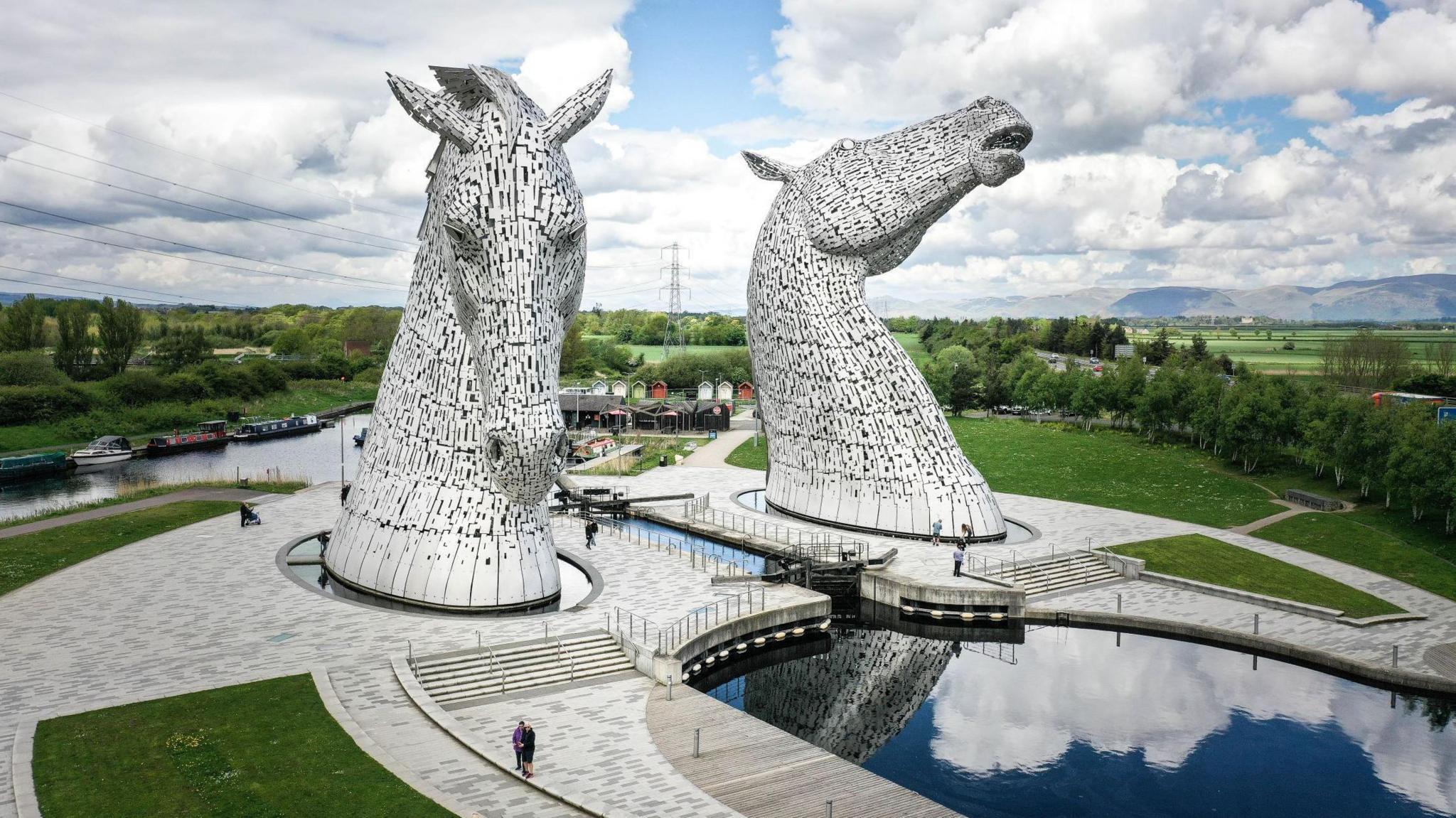
The Kelpies are now among Scotland's best-known landmarks
- Published
It’s close to 20 years since I sat on the doorstep of Andy Scott’s art studio in the Maryhill area of Glasgow.
His best-known work at that time was a steel sculpture of a horse, which could be seen from the M8 motorway.
At 14ft tall, it was a fraction of the size of the sculptures which he was planning.
“That was when I was first approached by Scottish canals,” he says.
“I think they were buoyed by the success of the Falkirk Wheel, and they wanted something equally iconic for the area.
“I took the title – The Kelpies – and came back with some ideas. I’m not sure it was what they were expecting but they had the vision to see it through.”
Richard Millar, chief operating officer at Scottish Canals, says it was a challenge.
“There were moments when people said you shouldn’t make giant art, you should spend it on hospitals or schools. But that’s not what the money was for.
"The money was for creating living landmarks and that was why we got the largest Lottery grant in Scotland of £25m – to create the Helix Park and the Kelpies.”

Andy Scott modelled the Kelpies on two Clydesdale horses called Duke and Baron
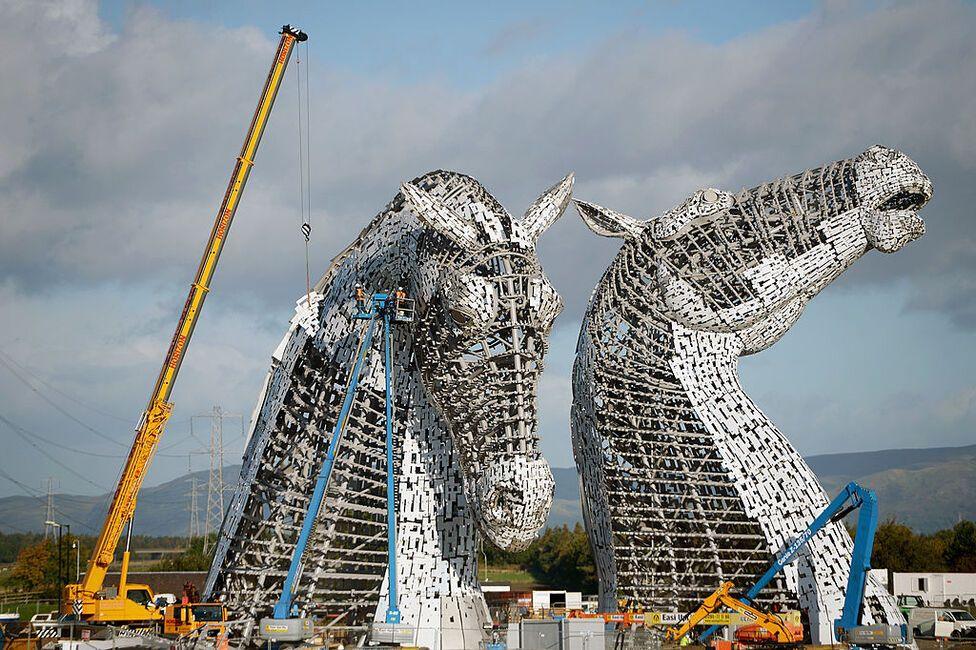
The Kelpies took months to construct next to the Forth and Clyde canal near Falkirk
The project faced many challenges, financial and practical.
Transforming the plans into two 30 metre-tall horses was a combined feat of art and engineering, involving more than 600 tonnes of steel.
The Kelpies were not only inspired by the industry of the area, but they also used what remained of its traditional skills to create the structure.
A small army of people were involved, including a hundred one-off jobs in the construction phase.
“I sometimes feel like the centre-forward who scored the goal, but there’s a whole team behind us,” says Andy Scott.
“There were hundreds of people involved, including engineers and landscape architects, and I’m just proud to have been part of it all.”

The huge sculptures were officially unveiled by Princess Anne
He says the appointment of the fabrication company, SH Structures in Yorkshire, was the moment he realised the project would work.
“They came to my workshop in Glasgow, and I visited them in Yorkshire," he says. "They understood it and they methodically scanned the original models.
“Another pivotal moment was when one of the main structural engineers, Nick Cooper, said you concentrate on the sculpture, and we will concentrate on the structure.
"That’s when it started to take shape and I realised it’s going to take a while but it’s going to be good.”
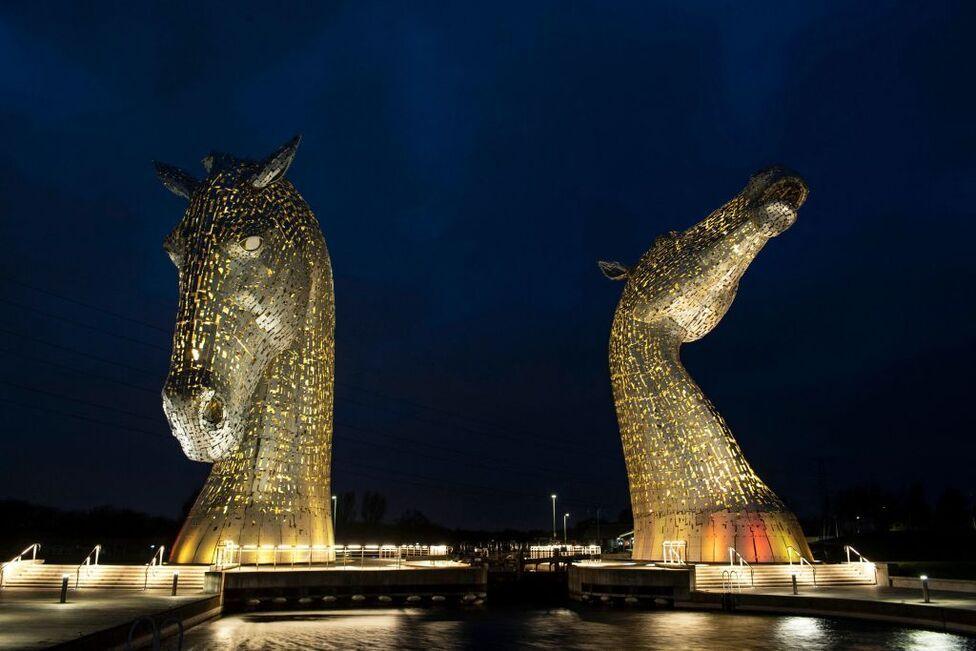
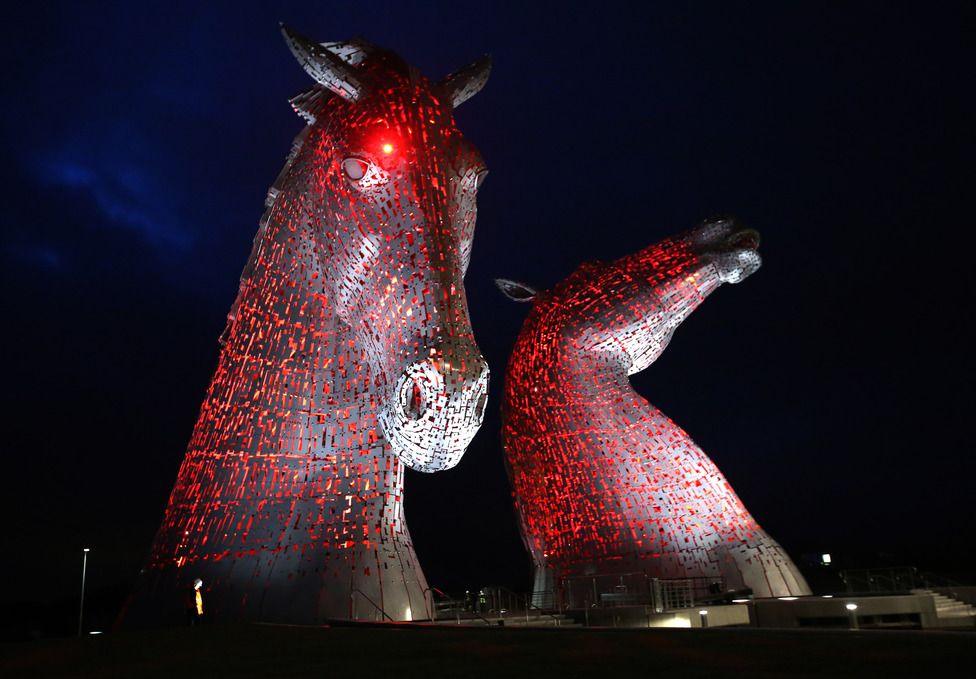
The horses are lit up in a variety of colours for different events
The Kelpies were officially launched in 2014 and - as intended – brought global attention to the area. One of the first visitors was the Queen, who was shown inside the structure by its creator.
“As we left, two planes flew over and made a heart sign in the sky,” says Andy.
“The Queen said, what a special moment, and I had to agree.”
Since then, an estimated 40 million sightings have been made from the M9 motorway.
Around 800,000 people have viewed them in site and over 10 years, they’ve attracted 7.3 million visitors to Falkirk and Grangemouth.
They’ve featured on bank notes and in a Chinese advertising campaign.
And of course, they’ve been captured on camera on countless occasions, most recently beneath the International Space Station.
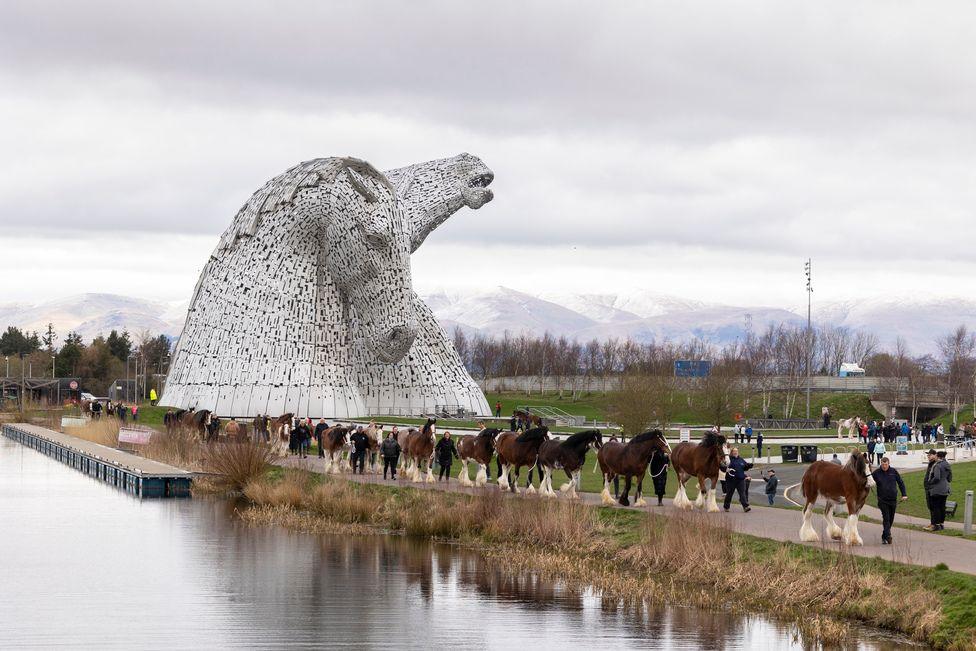
The sculptures represent the lineage of Clydesdale horses in Scottish industry and economy
Andy and his Dutch wife Hanneke now live in the US, but they still follow the Kelpies’ fortunes from afar.
“We see posts almost every day on social media. Some from drones, some just selfies with the Kelpies. And we’re always getting messages from people to say they’ve visited.
"It’s a lovely thing to see them get that global coverage. “
But he admits the downside of creating the world’s largest equine sculptures is that he’ll always be in their shadow. At least, in Scotland.
“It was one of the reasons Hanneke and I decided to try a different country for a while,” he says.
“They’re a great calling card – and we’re very proud of them - but sometimes you need a little distance.”
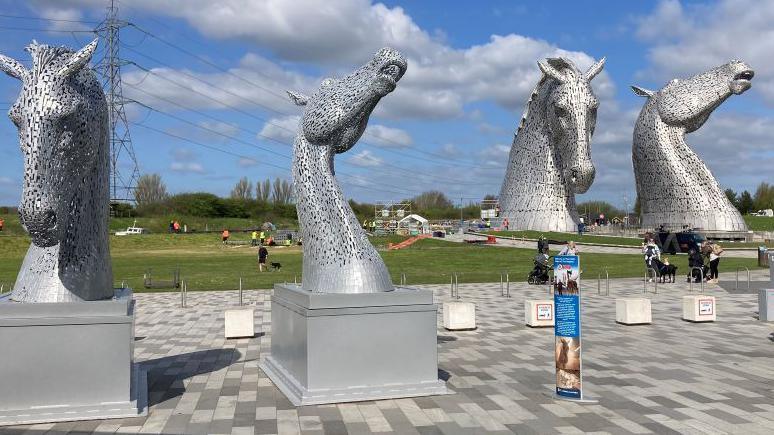
The Kelpies with their miniature versions in the foreground
This weekend Andy’s back in Scotland and will attend a special event at the Kelpies to mark their 10th anniversary.
And his hopes for their future?
“I just hope they go from strength to strength. I hope they are maintained and that the site keeps attracting visitors and their reputation grows internationally.
They’ve become ambassadors for Scotland, and I hope they stand proud for years to come.”